







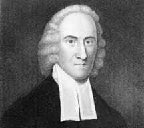
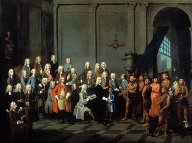
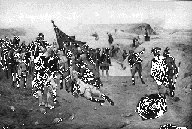
 SUGAR ACT PASSED
SUGAR ACT PASSED
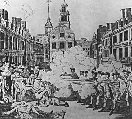
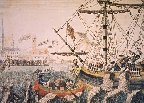
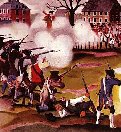
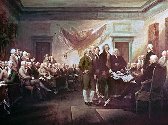 DECLARATION OF
DECLARATION OF
 BATTLE OF SARATOGA
BATTLE OF SARATOGA
 BATTLE OF YORKTOWN
BATTLE OF YORKTOWN
 CONSTITUTION WRITTEN!
CONSTITUTION WRITTEN!
SENECA FALLS CONVENTION ‚Äď 1848
Women like Lucretia Mott and Elizabeth Kady Stanton met to create a list of rights they wished to obtain for WOMEN. This led to the fight for WOMEN’S RIGHTS, including  the right to vote.
the right to vote.
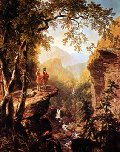 HUDSON RIVER SCHOOL
HUDSON RIVER SCHOOL
CAUSES OF THE CIVIL WAR
There were many causes of the Civil War. Some include:
LED TO THE RIGHT OF JUDICIAL REVIEW!
His opinion established the power of judicial review‚ÄĒthat is, the court's authority to declare laws unconstitutional.
In ART, the Hudson River School movement started.
‚ÄĘThis was the first time American painters,
like Thomas Cole, attempted their own style.
‚ÄĘThey focused on landscapes.
‚ÄĘThey ‚Äúbroke away‚ÄĚ from England‚Äôs painters style!
*They painted realistic paintings of landscapes!
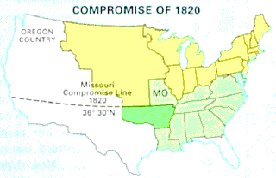 THE MISSOURI COMPROMISE
THE MISSOURI COMPROMISE
(1820)
‚ÄĘ
There was a great debate over where slavery would be
allowed and where it would not. A debate occurred and
finally a compromise was reached.
It stated:
1.) Missouri entered as a slave state.
2.) Maine entered as a free state.
3.) The 36’ 30’’ line is drawn.
‚ÄĘThis compromise was effective for a number of years ‚Äď almost thirty! However, after about 1850, problems began to occur and the compromise was less and less effective.
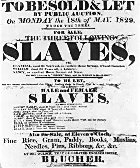 COMPROMISE OF 1850
COMPROMISE OF 1850
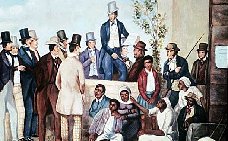
‚ÄĘCOMPROMISE AGAIN!
‚ÄĘThis time it includes 5 parts!
ō
1.) California enters as a FREE state.
 ō
2.) Area from Mexican Cession divided into Utah and New Mexico.
ō
2.) Area from Mexican Cession divided into Utah and New Mexico.
Slavery issue to be decided by POPULAR SOVEREIGNTRY.
ō
3.) ENDED slave trade in Washington D.C.
ō
4.) Made a **STRICT Fugitive Slave Law **
ō
5.) Settled boarder problems between New Mexico and Texas.
‚ÄĘAgain, problems better for a short period of time and then became worse!
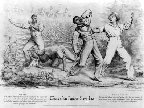 FUGITIVE SLAVE LAW
FUGITIVE SLAVE LAW
(1850)
*This law was part of the compromise of 1850.
*It was a law that REQUIRED citizens to catch runaway slaves.
*Northerners HATED this law because it forced them to become a part of the system of slavery.
**Northerners began to support the abolition (to get rid of) of slavery.
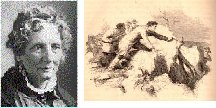 UNCLE TOM’S CABIN
UNCLE TOM’S CABIN
(1852)
*
This was a NOVEL written by Harriett Beecher Stowe.
*It was written to show the EVILS of slavery by telling the story of an older slave who was
whipped to death by his owner.
*After reading it, MANY Northerners began to change their view of slavery.
**Many wanted to see the abolition of slavery.
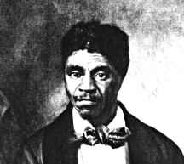 DRED SCOTT DECISION
DRED SCOTT DECISION
(1857)
‚ÄĘDred Scott was a slave.
‚ÄĘHe had lived in a free territory with his owner.
‚ÄĘHis owner moved back into a slave state.
‚ÄĘWhile there, the owner died.
‚ÄĘScott had ABOLITIONIST attorneys file a law suit for him.
‚ÄĘIt went to the Supreme Court but he LOST.
‚ÄĘThe Court ruled he was NOT a citizen but RATHER property and therefore he could not
file a lawsuit.
‚ÄĘAlso, they ruled that Congress could NOT ban slavery in any of the territories.
‚ÄĘThis REPEALED the Missouri Compromise.
‚ÄĘSoutherners LOVED the ruling while Northerners HATED it!
It meant slavery could spread into all the territories!
THE CIVIL WAR
STRATEGIES OF THE UNION:
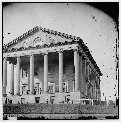
‚ÄĘUse the Navy to blockade Southern ports
‚ÄĘSEIZE Richmond, Va.
.
(the Confederate Capitol)
‚ÄĘSEIZE control of the Mississippi River
The rebels capitol in Richmond, Va.
STRATEGIES OF THE CONFERDERATES!

‚ÄĘFight a defensive war
‚ÄĘCount on European‚Äôs money
and supplies to help them win the war.
THE COUNTRIES OF EUROPE!
FORT SUMTER - April 11,1861
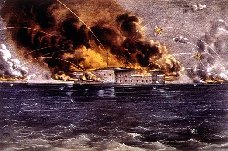
Fort in South Carolina that was controlled by the Union.
This is where THE FIRST SHOTS OF THE CIVIL WAR
WERE FIRED!
WER FIRED!
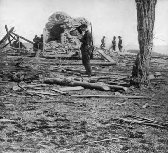 BATTLE OF BULL RUN - July, 1861
BATTLE OF BULL RUN - July, 1861
‚ÄĘ
FIRST actual battle fought in Civil War.
‚ÄĘSpectators come out with PICNIC BASKETS to watch the war!
‚ÄĘJackson stands his ground and the Union retreats.
‚ÄĘBattle shows war will be long and bloody
and that BOTH sides need better training!
ANTIETAM - September 17, 1862
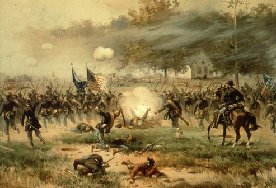
‚ÄĘLee plans this attack
‚ÄĘMessenger looses his plans
‚ÄĘUnion soldiers find them and gave them to
Mc Clellan who was still slow to react
‚ÄĘConfederacy retreats
‚ÄĘUnion does not pursue
‚ÄĘOver 23,000 killed
‚ÄĘUnion claims victory
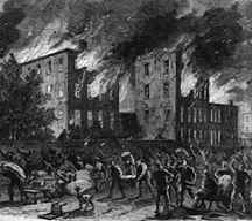 THE ANTI-DRAFT RIOTS - 1863
THE ANTI-DRAFT RIOTS - 1863
‚ÄĘThese RIOTS occurred in New York City
and lasted for FIVE DAYS!
‚ÄĘPeople were rebelling against a 1863 draft law.
‚ÄĘThis law gave the RICH a way out.
**If people had enough money,
they could avoid being sent off to fight.
‚ÄĘThe mostly foreign-born, poor laborers of
New York City could not afford this and
thus were sent off to fight.’
‚ÄĘThis SPECIAL TREATMENT of the rich angered many and thus, the RIOTS broke out.
THE EMANCIPATION PROCLAMATION! - January 1, 1863
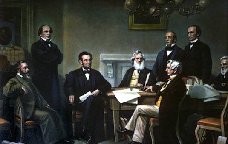
‚ÄĘThis was a document written
and ‚Äúproclaimed‚ÄĚ by Lincoln!
‚ÄĘIt stated that ALL slaves in states in
rebellion with the United States would be freed.
‚ÄĘNO SLAVES actually were freed however because the SOUTHERN states paid NO ATTENTION to this document.
‚ÄĘThe document did however CHANGE the focus of the Civil War.
Slavery was now an issue. This ALSO kept ENGLAND out of the war!
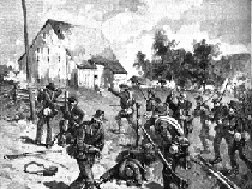 GETTYSBURG - July 1 ‚Äď 3, 1863
GETTYSBURG - July 1 ‚Äď 3, 1863
*
Lee attempting to advance towards Washington D.C.
*Battle lasts for three days
*Last day, Pickett leads his men in a charge against the
Union, who have the high ground.
*Pickett’s men destroyed
*Confederates (Lee) retreats
*TURNING POINT OF THE WAR!
THE GETTYSBURG ADDRESS - NOVEMBER 19, 1863
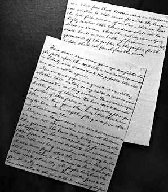
‚ÄĘThis was a VERY FAMOUS SPEECH
given by Abraham Lincoln.
‚ÄĘHe gave it at a ceremony to dedicate the
National Cemetery in Gettysburg, Pa.
**His speech HONORED those who
died during the Civil War battle at Gettysburg.
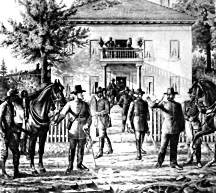 APPOMATTOX - early April, 1865
APPOMATTOX - early April, 1865
*PLACE WHERE CONFEDERATES (ROBERT E. LEE)
SURRENDERED TO THE UNION (ULYSSES S. GRANT).
*Grant tried very hard to allow the Confederates to keep their
dignity. He felt they were ‚Äúhis brother‚ÄĚ and he worried as
as they became countrymen again.
LINCOLN IS ASSASSINATED - APRIL 14, 1865
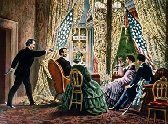
While watching a play with his wife
at Ford’s Theater in Washington D.C.,
Abraham Lincoln is SHOT in the
back of the head by an actor named JOHN WILKES BOOTH.
‚ÄĘHe died at 7:20 am, the next morning, at a Washington D.C. hospital.
‚ÄĘThe country was in total shock!
**ONE result of the Civil War ‚Äď SLAVERY ENDED!**
RECONSTRUCTION!
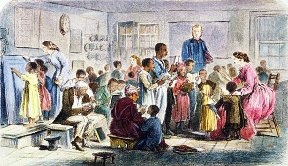 ‚ÄĘ
This was the process where the country tried to ‚Äúrebuild‚ÄĚ the south after the Civil war.
‚ÄĘ
This was the process where the country tried to ‚Äúrebuild‚ÄĚ the south after the Civil war.
‚ÄĘThere were FOUR main plans:
1.) Lincoln’s 10% Plan
2.) Johnson’s Plan
3.) Radical Reconstruction Plan
4.) South REDEEMED! Freedman’s school!
- Southern Conservatives get back into power.
-They accomplish this by limiting African American voting rights!
They use things like: (know what each of these are)
POLL TAXES, THE GRANDFATHER CLAUSE and LITERACY TESTS!
THE FOUR MAIN GROUPS DURING RECONSTRUCTION!
![]()
1.) NORTHERN MODERATES ‚Äď President Lincoln
both Republicans and Democrats
*GOAL ‚Äď get country back together as quickly as possible.

2.) RADICAL REPUBLICANS ‚Äď Frederick Douglass
Northern Congressman; felt south to blame for war
*GOAL - Wanted south completely ‚Äúreconstructed‚ÄĚ; punished

3.) FREEDMAN ‚Äď Freedman waiting
This group are the NEWLY FREED, former slaves. For help from *GOAL ‚Äď A BETTER life; look to future with hope and some fear. government!
4.) SOUTHERN CONSERVATIVES ‚Äď
This group were the former white leaders who had power
*GOAL ‚Äď think should be just like it was before only without slaves.
SUPREME COURT CASES!
COURT CASE ‚Äď MARBURY VS. MADISON / 1803
This 1803 decision marked the first time the United States Supreme Court declared a federal law unconstitutional. Chief Justice John Marshall wrote the opinion for the court. He held that it was the duty of the
judicial branch
to determine what the law is.
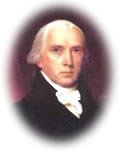
James Madison
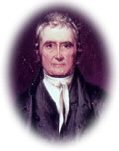
John Marshall
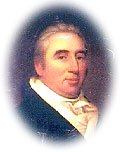
William Marbury
 PLESSEY VS. FERGUSON - 1896
PLESSEY VS. FERGUSON - 1896
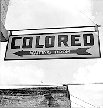
‚ÄĘ
This was a court case that went
all the way to the Supreme Court!
‚ÄĘIt involved an African American child
and the right to the SAME QUALITY education as a white child
‚ÄĘThe court ruled that ‚ÄĘThe court ruled that SEPARATE BUT EQUAL was o.k.
(said it was CONSTITUTIONAL)
HOWEVER, separate NEVER was equal for the southern blacks!
Because of this ruling, JIM CROW LAWS became the way of the South.
THREE NEW AMENDMENTS PASSED!
‚ÄĘ13th. Amendment ‚Äď
This amendment freed the slaves.
‚ÄĘ14th. Amendment ‚Äď
This amendment gave the former slaves CITIZENSHIP!
‚ÄĘ15th. Amendment ‚Äď
This amendment gave African American men over 21 the right to vote.

Hiram Rivals ‚Äď first black Senator
WESTERN EXPANSION
WESTERN EXPANSION
(INCLUDES 5 MAIN AREAS!)
 RANCHERS ‚Äď
RANCHERS ‚Äď
Lived on the plains.
Cattle was their ‚Äúway of life.‚ÄĚ
Drove their cattle to COWTOWNS
like ABILENE, KANSAS.
Cow towns ‚Äúsprang up‚ÄĚ near railroads.
These cow towns were often at the end of trails like the CHISHOLM TRAIL.
NATIVE AMERICANS ‚Äď DAWE‚ÄôS ACT - 1887
‚ÄĘThis ACT or law gave approximately 160 acres
to individual Native Americans for farming or 320 acres for grazing..
 ‚ÄĘThe ides was to turn the Native Americans into farmers.
‚ÄĘThe ides was to turn the Native Americans into farmers.
It was felt this would ‚Äúcivilize‚ÄĚ them. (ASSIMILATION)
‚ÄĘThe Native Americans did not believe in owning their own land.
Land belonged to EVERYONE in the tribe equally.
‚ÄĘThey often sold off their land for ‚Äúnext to nothing‚ÄĚ.
This resulted in much of the ‚Äútribal‚ÄĚ lands being ‚Äúwhite hands‚ÄĚ within a few decades.
 FARMING THE GREAT PLAINS! (THE SODBUSTERS)
FARMING THE GREAT PLAINS! (THE SODBUSTERS)
Many people moved West due to the HOMESTEAD ACT!
People received 160 acres of land for FREE!
They had to agree to farm it for at least FIVE YEARS!
The steel plow and the wind mill.
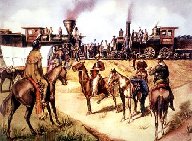 THE RAILROAD ‚Äď connecting to the West!
THE RAILROAD ‚Äď connecting to the West!
Railroads were very important to people moving west.
Goods and people could be shipped easier.
The railroads connected the East and West.
This was called the TRANSCONTINENTAL RAILROAD.
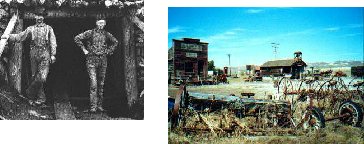 MINERS ‚Äď
MINERS ‚Äď
Discoveries of gold and silver brought
MANY to the west because they thought
They could get rich quick.
Wherever mines were built, towns ‚Äúsprang up‚ÄĚ.
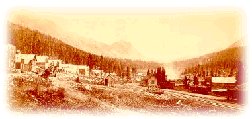 These were called BOOM TOWNS.
These were called BOOM TOWNS.
When people left them suddenly,
they became GHOST TOWNS.
VOCABULARY TO KNOW!

‚ÄĘ
TARIFFS ‚Äď
these are taxes on goods brought into the country (IMPORTS).

![]()
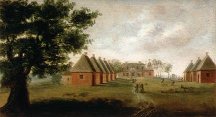
SECTIONALISM - the BELIEF that your part of the
country (North or South) is more important than
the needs of the rest of the country.
This was the REAL cause of the Civil War!
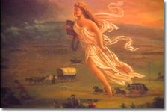
MANIFEST DESTINY - This was the BELIEF that America had the
RIGHT and RESPONSIBILITY to spread from OCEAN to OCEAN
(the ATLANTIC to the PACIFIC)
STUDY GUIDE FOR
MR. COOK’S MIDTERM!
(By: Mrs. Camuto)
JAN. 2004
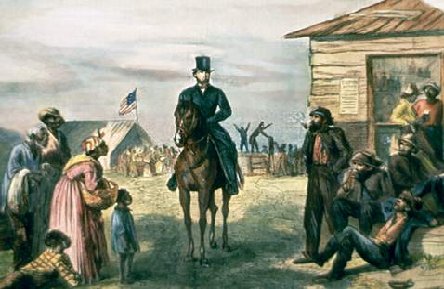
PEOPLE TO KNOW!
PEOPLE TO KNOW!
(you MUST know FIVE from the following two pages VERY WELL!)
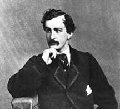 ‚ÄĘ
JOHN WILKES BOOTH ‚Äď
‚ÄĘ
JOHN WILKES BOOTH ‚Äď
Southern actor.
Known for shooting Abraham Lincoln.
He was caught and hanged.
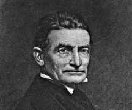 JOHN BROWN ‚Äď
JOHN BROWN ‚Äď
An abolitionist (someone who doesn’t believe / like slavery)
who went to extreme measures to help free the slaves.
He was involved in murders and the uprising at Harper’s Ferry.
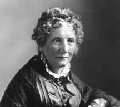 HARRIET BEECHER STOWE ‚Äď
HARRIET BEECHER STOWE ‚Äď
Author of the novel Uncle Tom’s Cabin.
Known for getting Northerners ‚Äústirred up‚ÄĚ over the slavery issue.
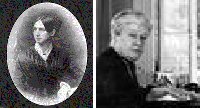 DORTHEA DIX ‚Äď
DORTHEA DIX ‚Äď
A woman who worked to bring supplies
and care to Union soldiers.
She was named Superintendent of Nurses for the Union Army.
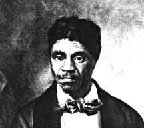 DRED SCOTT
-
DRED SCOTT
-
‚ÄĘDred Scott was a slave.
‚ÄĘHe had lived in a free territory with his owner.
‚ÄĘHis owner moved back into a slave state.
‚ÄĘWhile there, the owner died.
‚ÄĘScott had ABOLITIONIST attorneys file a lawsuit for him.
‚ÄĘIt went to the Supreme Court but he LOST.
‚ÄĘThe Court ruled he was NOT a citizen but RATHER property and therefore he could not file a lawsuit.
 THOMAS COLE ‚Äď
THOMAS COLE ‚Äď
A painter from the Hudson River School movement.
They painted pictures of American landscapes.
KNOW THE FOLLOWING EVENTS!
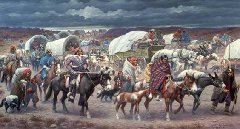 THE TRAIL OF TEARS ‚Äď 1838
THE TRAIL OF TEARS ‚Äď 1838
‚ÄĘIn 1838, 15,000 Cherokees
were
forced to march hundreds of miles from their homes.
‚ÄĘThey were forced off their land
and sent to land west of the Mississippi River.
‚ÄĘThe march was called the ‚ÄúTrail of Tears‚ÄĚ because thousands died along the way; mostly children and the elderly.
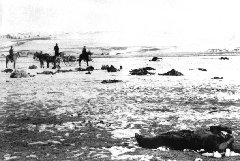 WOUNDED KNEE - December, 1890
WOUNDED KNEE - December, 1890
‚ÄĘStarted when MANY people began heading
towards the Reservation due to Sitting Bull’s death.
‚ÄĘSoldiers became worried and nervous.
‚ÄĘAt one point, they surrounded a group of Native Americans.
‚ÄĘThe soldiers persuaded them to surrender.
‚ÄĘWhile they were turning over their guns,
a shot was fired (no one really sure who fired first!)
‚ÄĘSoldiers LOST CONTROL and started firing at everyone.
‚ÄĘIn the end, 300 men, women and children were lying died.
‚ÄĘIt was a SLAUGHTER that was never forgotten.
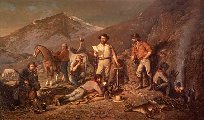
COMSTOCK LODE ‚Äď June, 1859
This was a GREAT silver deposit
discovered in the state of Nevada.
Led to a boomtown!
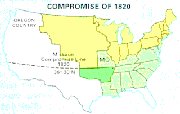
THE 36‚Äô 30‚Äô‚Äô LINE ‚Äď
This imaginary line was drawn as a result of
the Missouri Compromise.
The states NORTH of the line are FREE and
those SOUTH of the line are SLAVE states.
.